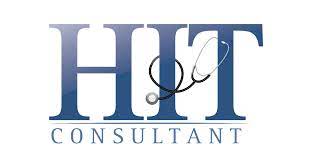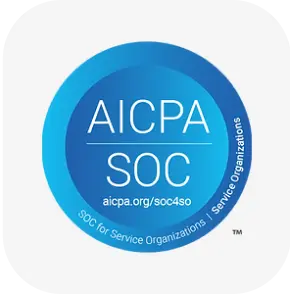By Fred Pennic
Axuall’s CEO & Founder, Charlie Lougheed shares why health administration teams should embrace the power of robotic process automation (RPA).
Built with leading healthcare systems, Axuall is a workforce intelligence company powered by a national real-time practitioner data network. The technology enables healthcare systems, staffing firms, telehealth, and health plans to dramatically reduce onboarding and enrollment time while also providing unique, powerful data insights for network planning, analytics, and reporting. The company’s CEO and founder, Charlie Lougheed, believes that the smarter use of analytics is a core factor in giving health systems the opportunity to build better networks, all while empowering healthcare administration teams with better, more complete, and more timely data — that also complies with industry standards and aligns with existing workflows.
HITC: To start, why should health administration teams embrace the power of robotic process automation (RPA)?
Lougheed: Robot Processing Automation (RPA) can sound like a threatening term for health administration teams, but in reality, this technology should be looked at as their friend, rather than their enemy. To put it simply, these bots are like border collies because they do the job of constantly herding information (not sheep, of course).
There was a time when shepherds used to herd sheep themselves, but then along came the sheepdogs, and the process got a lot more efficient. The only shepherds that lost their job were the ones that didn’t take advantage of this new “technology,” it has nothing to do with “giving up control.”
HITC: So, it sounds like bots aren’t replacing humans, but rather enhancing their productivity. How can RPA and other healthcare automation tools ensure health administrators can meet the current challenges?
Lougheed: Exactly. Healthcare administrators should view RPA as a tool to enable – not replace – humans. While this automation isn’t a new concept, its potential to help alleviate some of the biggest trends and challenges facing our country’s healthcare system today has become much more prevalent (e.g., the widening gap between supply and demand, a rapidly growing clinician shortage, and the shrinking revenue and budget that follow as a result).
By combining RPA with the provider big data, for instance, the two can eliminate much of the manual intervention that currently holds administrators back from the truly important activity that requires critical thinking. The widespread adoption of this technology could empower MSPs and healthcare executives to collaborate, analyze, plan, and deploy resources where they’re most needed in a way that’s never been possible before – all while automatically meeting credentialing and privileging regulations at the same time.
HITC: How can RPA specifically help health admin teams optimize their employee staffing?
Lougheed: It’s no secret that staffing has emerged as one of the most immediate concerns in healthcare today. In fact, personnel shortages even just replaced financial challenges as the top concern for hospital CEOs for the first time in nearly two decades, according to the American College of Healthcare Executives.
This “new normal” leaves health systems permanently operating in an extremely challenging environment. The key to successfully navigating staffing will be efficiency and flexibility – two things traditionally not within reach for hospitals due to credentialing and privileging regulations. However, RPA is providing health systems with comprehensive, real-time insight into their current and future clinical workforce, allowing administrators to better navigate the increasing challenges of care logistics. Doing so allows big data to be applied across the provider community that can address gaps in workforce supply, distribute precious resources more efficiently, and optimize care networks.
The result will be a future of healthcare that allows administration teams to become data analysts, not just data aggregators.
HITC: What are some best practices for selecting an RPA vendor for health administrators?
Lougheed: There’s no silver bullet solution that will ever be able to make all of our problems immediately disappear – especially in an industry as convoluted as healthcare. However, I would encourage healthcare administrators who are considering partnering with an RPA vendor to seek out those who can offer the following:
- The ability to analyze and plan through comprehensive real-time insight into your current and future clinical workforce.
- Enabling faster onboarding that allows clinicians to speed up the credentialing and privileging process, become enrolled, and ultimately be deployed where they’re needed to meet demand.
- Continuous updates that ensure an always-ready and compliant workforce.
- Cross-credential across collaborative care networks to expand services and revenue.
- Technology that plugs into and leverages existing systems.
Most importantly, any RPA vendor should be able to ensure health systems can optimize their economics by ultimately reducing unnecessary delays, costs, and barriers to revenue capture.
HITC: What are some of the deployment challenges health administrators should be aware of?
Lougheed: A successful deployment relies on top-down support from healthcare leaders. Process change requires aircover and encouragement for those in the trenches. We’ve seen the greatest success in environments where team members are encouraged to make the long-term investments needed to rethink and retain old ways.
Remember, all old ways were once new ways. Healthy and accountable patience for what it takes to transition is critical to transformation.
HITC: What would you like our readers to understand about Axuall and the power of analytics? What is the message you hope to spread through this interview?
Lougheed: Automation, when combined with work workforce intelligence, enables leaders to plan their care networks, providing visibility into where resource supply and demand are today and in the future (especially when combined with market data). It streamlines the recruiting process, making it easier for clinicians to apply for positions or privileges.
This doesn’t just improve patient access to care, but it can dramatically improve the bottom line by preventing leakage, reducing burnout, and improving overall financial performance. In fact, a recent study even found that Cleveland-based University Hospitals could generate an additional $74,000 per new physician hire based on a savings of just 16 days. If the health system leveraged Axuall for only a quarter of the newly onboarded physicians annually, administrators could ensure additional revenue capture of between $9.2 million and $13.9 million each year.
The early adopters of big data and analytics, combined with the power of RPA, are set to enjoy a significant advantage over the competition and reap the benefits long into the future.



